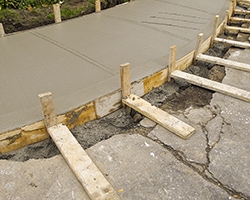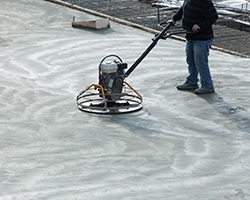Have you got tiny, red, rough bumps on your own epidermis? You aren’t alone: the situation, called keratosis pilaris, impacts 80 % of adolescents and 40 % of grownups. “It’s perhaps one of the most requests that are common have from individuals on social networking and my YouTube channel,” Dr. Sandra Lee, a.k.a. Dr. Pimple Popper, tells Mental Floss via e-mail.
Lee created her brand brand brand new Body Smoothing System—which carries a human body scrub and a lotion—in response to that feedback. “KP is such a typical condition but you will find very few items available over-the-counter that address it particularly. People may well not even comprehend they’ve keratosis pilaris and believe that the bumps are acne or one thing else—so i must say i desire to distribute the phrase and teach about what this problem is really as well as give items that will help to get a grip on it.” some tips about what you must know about KP from Dr. Pimple Popper by herself.
1. THE PROBLEM POSSESSES NICKNAME WHICH IS FOR THE BIRDS.
The unmistakeable sign of KP is spots of little, rough, pimple-like bumps from the epidermis, based on Lee. It is due to exorbitant manufacturing of a protein called keratin, which builds up until it plugs follicles of hair (a.k.a. the pores) and results in those bumps to make. It’s called chicken epidermis since the condition resembles skin of the chicken that is plucked.
2. IT RUNS IN FAMILIES.
The causes of KP is unknown, many reports recommend it is an autosomal dominant condition, therefore you only have to inherit one content regarding the gene to get it. Based on Lee, KP starts early—sometimes before kid is also 2—and flares up during adolescence. Thankfully, most KP fades by adulthood.
3. KP IS OFTEN LOCATED ON THE UPPER ARMS.
But that is maybe perhaps not the only stick it seems: KP may also be on the front side of this legs, straight straight back, butt, or face. It could vary in extent from just a few bumps into the greater part of a specific section of the human body.
4. THE BUMPS AREN’T ALWAYS RED.
KP bumps tend to be lighter and redder on fair epidermis, relating to Lee. Nonetheless they can certainly be white, red, light purple, brown, or black—it all hangs regarding the individuals complexion.
5. THERE ARE MANY KINDS.
The kind of KP differs depending on where in the body it is discovered. Beyond regular KP—which may either be rough, flesh-colored bumps or red, itchy bumps—according to Lee, there is one other variant to be familiar with: keratosis pilaris rubra. It mostly impacts teenage men. The bumps are exactly the same, nevertheless the epidermis is just a bright, vivid red.
6. IT’S WORSE WITHIN THE WINTERTIME.
Such things as low moisture and cooler temperatures suggest your skin is drier, which irritates KP. But it is not merely the winter season that may cause KP to flare up. “Many individuals with KP will notice their condition worsen after they’ve invested amount of time in the sunlight,” Lee states. “this is often as a result of dryness that may aggravate the bumps. In addition, unprotected sunlight visibility may also darken pigmentation and also make KP more obvious in the epidermis.”
7. PEOPLE THAT HAVE KP MIGHT CHOOSE TO AVOID PERSONAL TANNING.
It is not because self tanner is dangerous, Lee states, but “because KP lesions are hyperkeratotic,” meaning your skin sticks up and it is dry. “Self tanner will likely get stuck and gather in these areas, causing those areas to then darken/stain more and the KP would look more noticeable,” she claims. “Also, self tanner has a tendency to dry skin up more in basic, therefore may possibly aggravate your KP more, since KP has too much to do with dried-out skin currently.”
In the event that you need to get that just-off-the-beach glow, Lee recommends dabbing your KP with moisturizer or cream “to make certain that self tanner does not get caught in it, stain the location more, and work out it more obvious.”
8. WHEN YOU HAVE ASTHMA, YOU MIGHT HAVE KP.
Based on the American Academy of Dermatology Association, individuals with dried-out skin, eczema, hay temperature, ichthyosis vulgaris (that causes dried-out skin), and asthma are more inclined to develop KP. “I do not think there clearly was a direct correlation between asthma and KP,” Lee claims. “However, folks who are atopic—they have actually dried-out skin and propensity for the weblink allergies and asthma—have an increased potential for having KP. People should never worry that if they have KP that what this means is they’ll develop asthma.”
9. WHEN YOU YOURSELF HAVE KP, DO NOT BE WORRIED.
“It is a common and safe condition of the skin,” Lee states. “However, i am aware why these bumps may be uncomfortable and in case they’ve been more serious, they’ll keep folks from planning to show their hands or wear quick sleeves.”
10. IT ISN’T CURABLE, HOWEVER IT IS TREATABLE.
“For those who have KP, you most likely desire to treat both the bumps and also the dryness in your epidermis,” Lee claims. “You can treat the bumps by exfoliation—chemical and real exfoliants/scrubs will help—and also by keeping epidermis hydrated! I suggest finding items that have an exfoliating ingredient such as for example glycolic acid and hydrating ingredients such as for instance shea butter.” These products in Lee’s Body Smoothing System both contain 10 % acid that is glycolic rendering it great for dealing with KP (along with epidermis that is generally speaking dry or bumpy).
And, last but most certainly not least, Lee claims you mustn’t forget your sunscreen: “It is essential to consider to always utilize sun that is broad-spectrum, but particularly on those areas you have got KP.”





